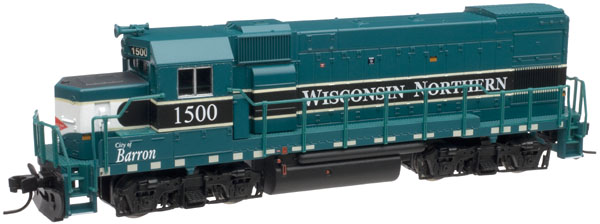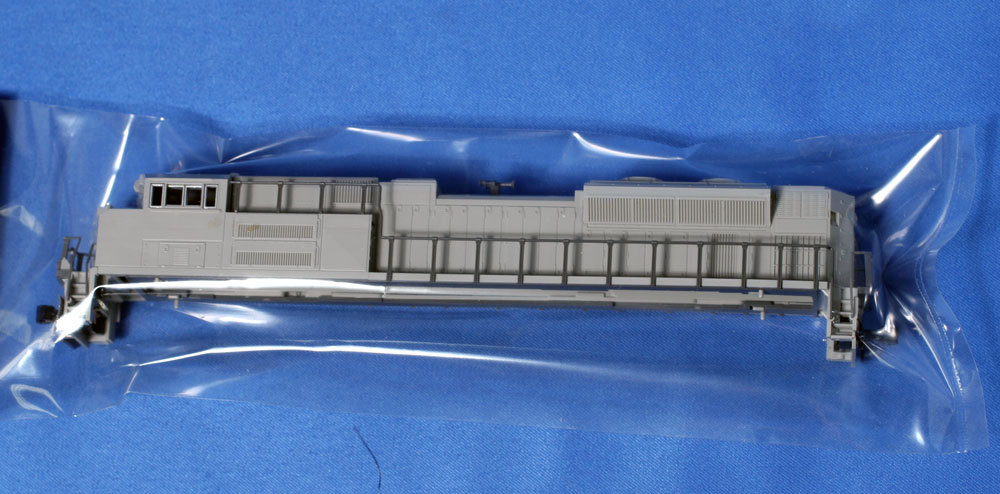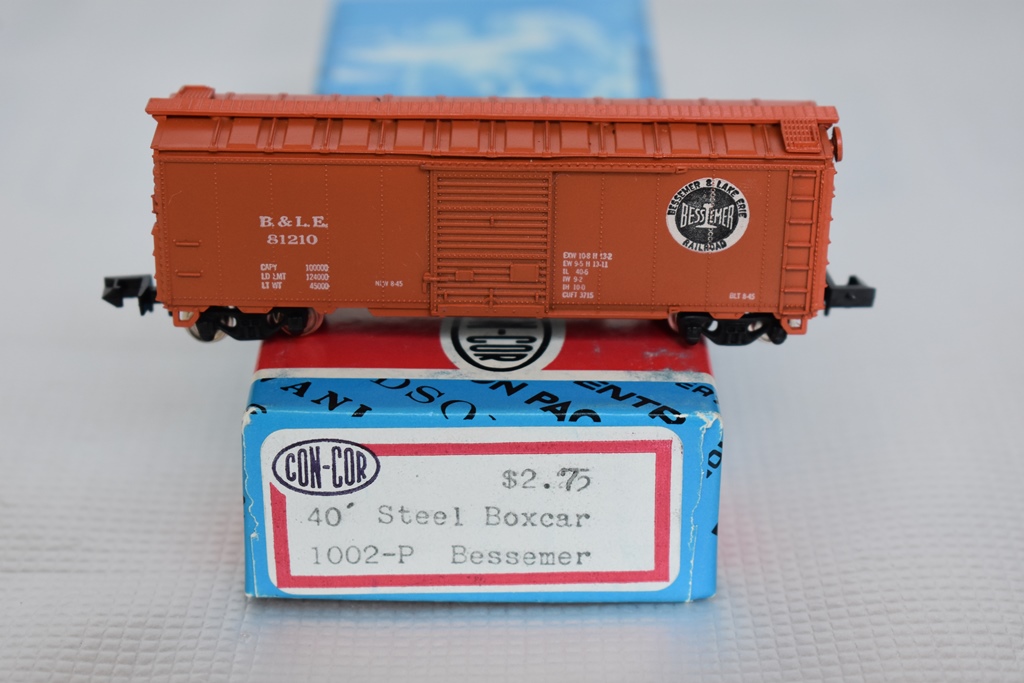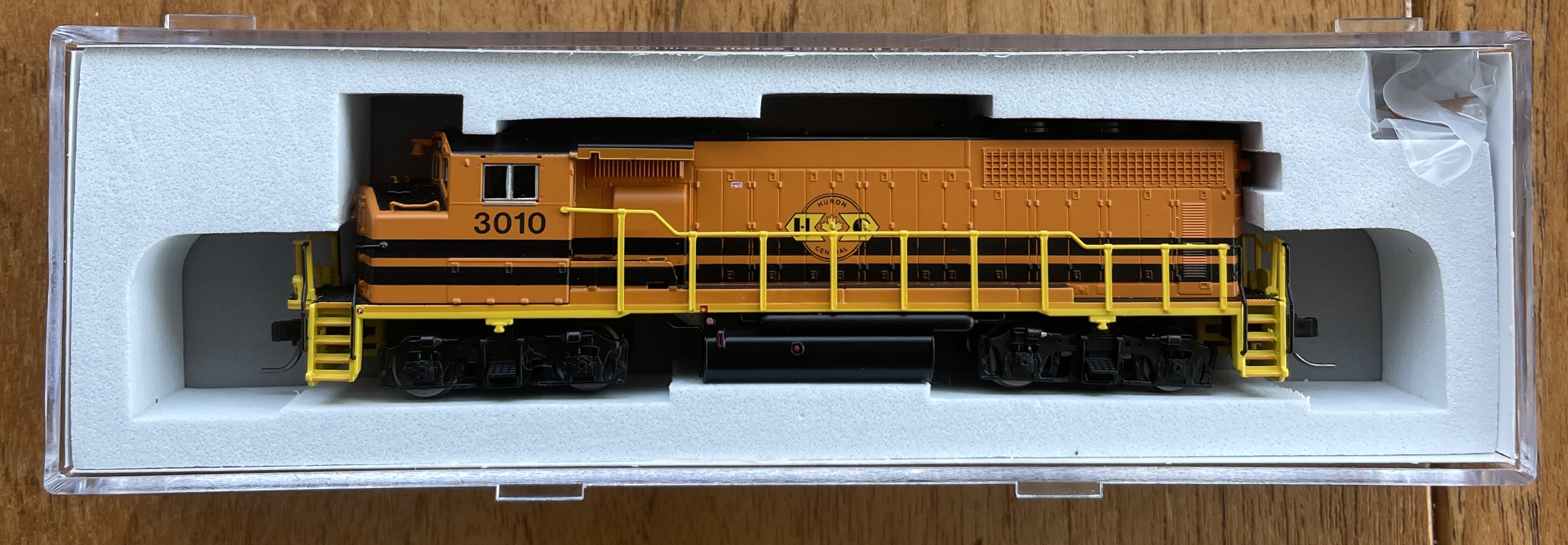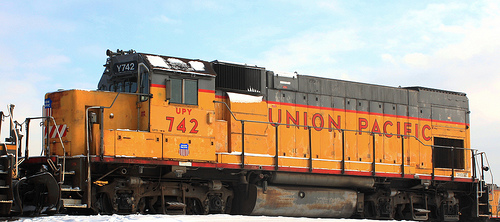Model Information: This model is part of the Atlas Trainman line and it features:
- Directional lighting;
- DCC Ready;
- Blackened metal wheels;
- Dual flywheel equipped 5-pole skewed armature motor with a low friction mechanism.
DCC Information: This model is DCC ready.
It accepts the following plug-in decoders (non-sound):
- Digitrax DN163A2: 1 Amp N Scale Board Replacement Mobile Decoder for Atlas GP30 (retired)
- Digitrax DN163A4: 1.5 Amp N Scale Board Replacement Mobile Decoder for Atlas GP30
- TCS ASD4: N-scale drop-in decoder for Atlas locomotives GP7/9, GP15, GP30, GP35
- NCE A12A2: N Scale Plug and Play decoder for the new Atlas "Classic" locomotives GP30, GP35, GP7, GP9
- Digitrax DN163A2: 1 Amp N Scale Board Replacement Mobile Decoder for Atlas GP30 (retired)
- Digitrax DN163A4: 1.5 Amp N Scale Board Replacement Mobile Decoder for Atlas GP30
- TCS ASD4: N-scale drop-in decoder for Atlas locomotives GP7/9, GP15, GP30, GP35
- NCE A12A2: N Scale Plug and Play decoder for the new Atlas "Classic" locomotives GP30, GP35, GP7, GP9
Prototype History: The EMD GP15-1 is a 4-axle diesel-electric locomotive built by General Motors Electro-Motive Division between June 1976 and March 1982. Intended to provide an alternative to the rebuilding programs that many railroads were applying to their early road switchers, it is generally employed as a yard switcher or light road switcher. This locomotive is powered by a 12-cylinder EMD 645E engine, which generates 1,500 hp (1,119 kW). The GP15-1 uses a 50-foot-9-inch (15.47 m) frame, has a wheelbase of 29 ft 9 in (9.07 m) and has a length over couplers of 54 ft 11 in (16.74 m). A total of 310 units were built for American railroads. A number of GP15-1s remain in service today for yard work and light road duty. The radiator section is similar to those found on the EMD SD40T-2 and EMD SD45T-2 "tunnel motors," leading some observers to incorrectly identify the units as such or as GP15Ts, and giving them the nickname "baby tunnel motors".
From Wikipedia
From Wikipedia
Road Name History:  This line started up in 2004 operating 63 miles of former C&NW and Soo routes in northern Wisconsin. It runs from a connection with Union Pacific at Norma (outside of Chippewa Falls) north to Cameron and Rice Lake. A branch runs west form Cameron to Almena. They are part of the Progressive Rail family of shortlines. Operations began modestly with traffic from the farming, timber, plastics and scrap industries but in 2011, a sand processing plant opened on the line and it now accounts for 90% of the traffic. The WN diesel fleet includes two GP15-1’s. two SD45R’s and an SW1500.
This line started up in 2004 operating 63 miles of former C&NW and Soo routes in northern Wisconsin. It runs from a connection with Union Pacific at Norma (outside of Chippewa Falls) north to Cameron and Rice Lake. A branch runs west form Cameron to Almena. They are part of the Progressive Rail family of shortlines. Operations began modestly with traffic from the farming, timber, plastics and scrap industries but in 2011, a sand processing plant opened on the line and it now accounts for 90% of the traffic. The WN diesel fleet includes two GP15-1’s. two SD45R’s and an SW1500.

Brand/Importer Information: In 1924 Stephan Schaffan, Sr. founded the Atlas Tool Company in Newark, New Jersey. In 1933 his son, Stephan Schaffan, Jr., came to work for his father at the age of sixteen. Steve Jr. built model airplanes as a hobby and frequented a local hobby shop. Being an enterprising young man, he would often ask the owner if there was anything he could do to earn some extra spending money. Tired of listening to his requests, the hobby-store owner threw some model railroad track parts his way and said, "Here, see if you can improve on this".
In those days, railroad modelers had to assemble and build everything from scratch. Steve Jr. created a "switch kit" which sold so well, that the entire family worked on them in the basement at night, while doing business as usual in the machine shop during the day.
Subsequently, Steve Jr. engineered the stapling of rail to fiber track, along with inventing the first practical rail joiner and pre-assembled turnouts and flexible track. All of these products, and more, helped to popularize model railroading and assisted in the creation of a mass-market hobby. The budding entrepreneur quickly outgrew the limitations of a basement and small garage operation. Realizing they could actually make a living selling track and related products, Steve and his father had the first factory built in Hillside, New Jersey at 413 Florence Avenue in 1947. On September 30, 1949, the Atlas Tool Company was officially incorporated as a New Jersey company.
In 1985, Steve was honored posthumously for his inventions by the Model Railroad Industry Association and was inducted into the Model Railroad Industry Hall of Fame in Baltimore, Maryland. In addition, Steve was nominated and entered into the National Model Railroad Association Pioneers of Model Railroading in 1995.
In the early 1990s, the Atlas Tool Company changed its name to Atlas Model Railroad Company, Inc.
In those days, railroad modelers had to assemble and build everything from scratch. Steve Jr. created a "switch kit" which sold so well, that the entire family worked on them in the basement at night, while doing business as usual in the machine shop during the day.
Subsequently, Steve Jr. engineered the stapling of rail to fiber track, along with inventing the first practical rail joiner and pre-assembled turnouts and flexible track. All of these products, and more, helped to popularize model railroading and assisted in the creation of a mass-market hobby. The budding entrepreneur quickly outgrew the limitations of a basement and small garage operation. Realizing they could actually make a living selling track and related products, Steve and his father had the first factory built in Hillside, New Jersey at 413 Florence Avenue in 1947. On September 30, 1949, the Atlas Tool Company was officially incorporated as a New Jersey company.
In 1985, Steve was honored posthumously for his inventions by the Model Railroad Industry Association and was inducted into the Model Railroad Industry Hall of Fame in Baltimore, Maryland. In addition, Steve was nominated and entered into the National Model Railroad Association Pioneers of Model Railroading in 1995.
In the early 1990s, the Atlas Tool Company changed its name to Atlas Model Railroad Company, Inc.
Item created by: Steve German on 2016-04-07 01:33:55. Last edited by CNW400 on 2020-09-02 12:05:16
If you see errors or missing data in this entry, please feel free to log in and edit it. Anyone with a Gmail account can log in instantly.
If you see errors or missing data in this entry, please feel free to log in and edit it. Anyone with a Gmail account can log in instantly.


